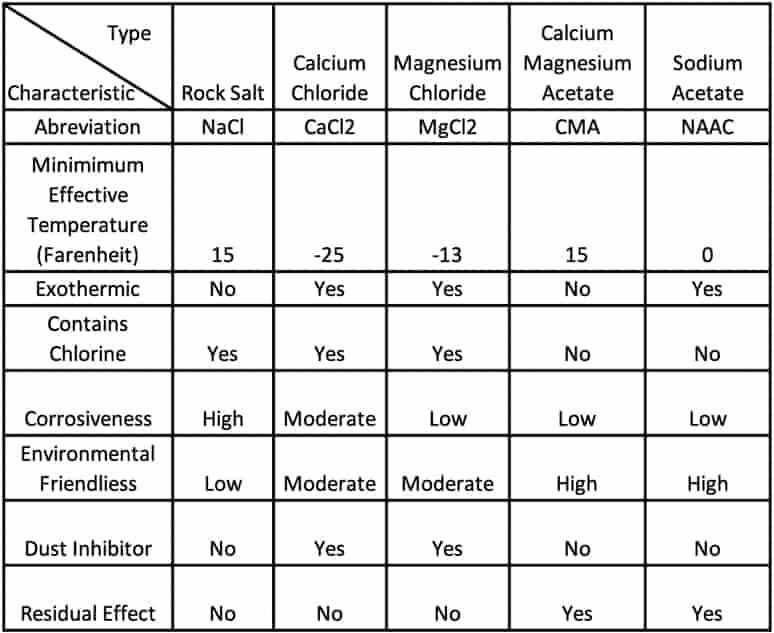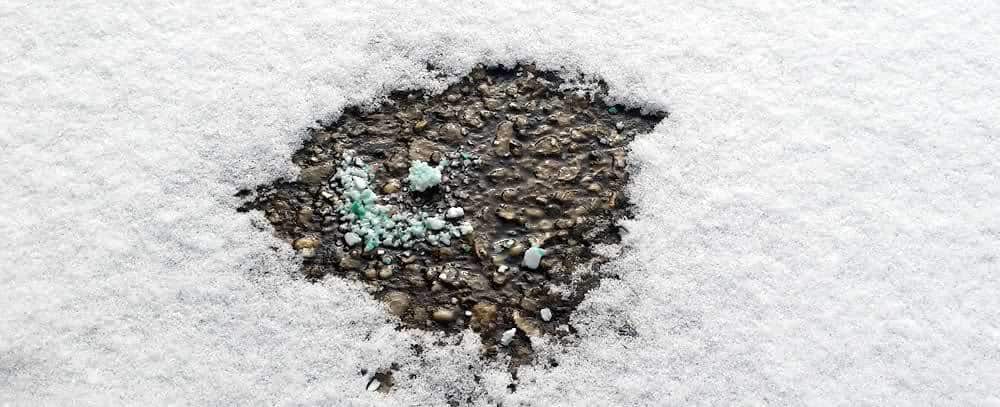We created a handy ice melt comparison chart of the most popular ice melts (see below). Descriptions of the characteristics are below the chart.
We did not add “blends” on the chart. Blends are rock salt mixed with another ice melt chemical. Blends retain the characteristics of the chemical mixed with rock salt, just in a less potent form, usually at a substantial cost savings.
Ice Melt Comparison Chart

Minimum Effective Temperature = This is the minimum temperature the chemical will work at. Any colder, and the ice melt won’t melt the ice.
Exothermic = Some ice melt chemicals produce heat (exothermic) when they come in contact with the ice. Exothermic ice melts work fast, often melting ice twice as fast or more compared to rock salt (using a 20°F temperature for the baseline).
Contains Chlorine = Chlorine tends to be more caustic on concrete than non-chlorine chemicals.
Corrosiveness = This is a relative measure of how much this chemical degrades concrete (creating pitting, spalling, and general degradation of your concrete).
Environmental Friendliness = This is a relative measure of how friendly to the environment the ice melt chemical is. There is disagreement about what makes an ice melt “friendly,” but some chemicals are less harmful in higher concentrations. Please note, small amounts of any of our chemicals are “friendly” and not harmful, while too much of any chemical can negatively affect plant and animal life.
Dust Inhibitor = Some chemicals are more ideal for dirt or gravel roads. They are “hygroscopic” (they attract moisture from the air) which helps keep dust out of the air. These chemicals also help improve compaction, keeping dirt roads firmer and less prone to degradation.
Residual Effect = Some chemicals like to “stick around.” Rock salt will run off with the melted ice to the drain, while others do a better job of staying on the pavement, and therefore will often still be there for the next snow or ice fall. These chemicals are particularly good for pre-treatment and use near entryways.

